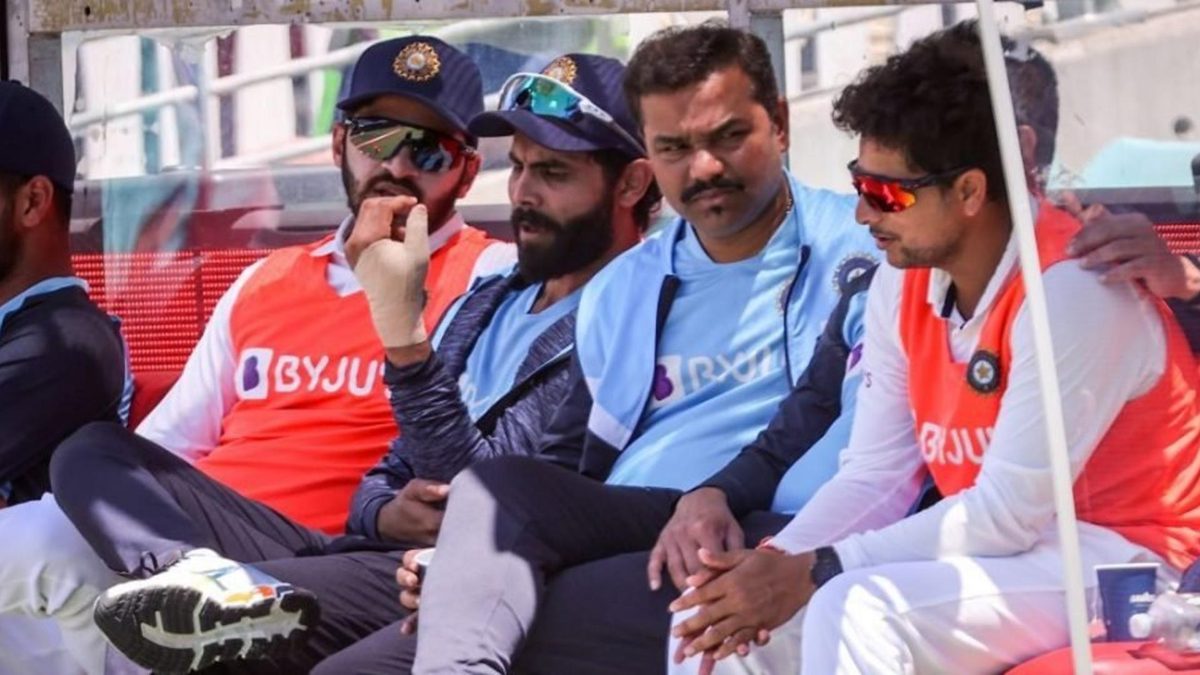
India will be without Ravindra Jadeja for the final Test against Australia and will need to make key selection decisions to rebalance the side.
In a way, it’s strange that India now appear to be in a tricky spot with Ravindra Jadeja ruled out of the series when he was unlikely to have been in their plans for the first Test of this series, even if fit. It says a lot about what Jadeja has added to the team in the last two Test matches. With Virat Kohli leaving the camp, and Umesh Yadav and Mohammed Shami ruled out, quite a bit has changed in terms of team dynamics too.
However, Jadeja’s injury might be India’s biggest body blow in the series yet considering how he balances the side with his all-round abilities. Unlike with the others who have already left the team since the start of the series, replacing Jadeja, rated as India’s Test MVP in the 21st century by CricViz analysis, will be tougher as India will be forced to incline towards one side or the other: playing an extra bowler or an extra batsman.
According to reports, Ravindra Jadeja has suffered a dislocation and fracture on his left thumb which could rule him out of the final #AUSvIND Test. pic.twitter.com/6xGvLy8Jxu
— Wisden India (@WisdenIndia) January 9, 2021
India played without a fifth bowler in the pink ball Test in Adelaide when they decided to leave Jadeja on the bench and it might be the formula they stick with for the Brisbane Test, especially if Rishabh Pant, who injured his elbow on day three of the Sydney Test and was unable to keep in the third innings, does not recover in time.
Pant is expected to recover in time for the fourth Test, but if he doesn’t, and with KL Rahul also out injured, India will be forced to play Saha, whose batting has come under scrutiny in recent times. In Australia, Saha averages 15.5 with the bat in eight innings, and banking on him at No.6 does not seem a feasible option. If Saha has to play, it is likely that India will bring in the extra batsman into the XI. Mayank Agarwal and Prithvi Shaw – both opening batsmen – are the only two batting options India have on the bench. So, bringing one of them in could see Shubman Gill or Rohit Sharma moving into the middle order.
Gill has mentioned his preference to bat at the top in recent times, but with both Mayank, likely to pip Shaw for the extra batting spot, and Rohit being more effective as openers, Gill might have to slip into Kohli’s position at No.4 with Ajinkya Rahane dropping down a position to lend a bit of weight to the second half of the middle-order.
On the other hand, India might be tempted to field the extra bowler, especially because their success in Melbourne came with a five-bowler formula. They have Thangarasu Natarajan, Shardul Thakur and Kuldeep Yadav available to them and it could come down to choosing between an extra pacer and a back-up spinner for Ashwin.
A Test debut might still seem far fetched, but in the last week or so, @Natarajan_91 has also added reverse swing to his bow, along with continuing to test the likes of Pujara and Rahane in the nets & has worked a lot with Bharat Arun #AUSvIND pic.twitter.com/5r10o6Fq9O
— Bharat Sundaresan (@beastieboy07) December 28, 2020
Natarajan has apparently been bowling well in the nets and has shown remarkable temperament on his maiden tour with the national team. He could slot in as the extra seamer at Brisbane, a venue where pacers have a much better record in comparison to spinners – 95 wickets at an average of 26.64 against 26 wickets at 51.42 since 2016.
Ashwin has four Test hundreds and averages 35.40 batting at No.6, so him moving up to No.7 might not seem like too much of a stretch. However, his form has tailed off in recent times. He averages just 16.54 since the start of 2017, with one half-century in that time.
It’s also worth noting that teams have mostly needed just the four bowlers in Brisbane in the last few years, although that could be put down to the fact that half of the Tests since 2016 at the venue were day/night games played with a pink ball. In the last five years at the Gabba, the only bowler to take more than two wickets in an entire Test when coming in to bowl as third change or greater is Yasir Shah who took four wickets in 2019. But, on that occasion, Iftikhar Ahmed, a part-timer, was used ahead of Yasir and bowled just 12 overs.
Playing an extra batsman might be considered a more conservative option, so if India do escape Sydney with a draw, knowing that another stalemate would see them retain the Border-Gavaskar Trophy could come into the equation. Equally, a series win has always been their stated aim, and there are crucial World Test Championship points on offer for a victory too.
There is further reason to stick to just four bowlers. Five of India’s seven wins away from home since 2018 also came with just four bowlers contributing more than 10 overs per innings. With Australia’s bowlers posing a genuine threat with the ball this series, the extra batting protection could serve India better. But finding the right balance, even with a seven-four line-up, could once again hinge on which two batsmen, out of the four available options, open the innings.








